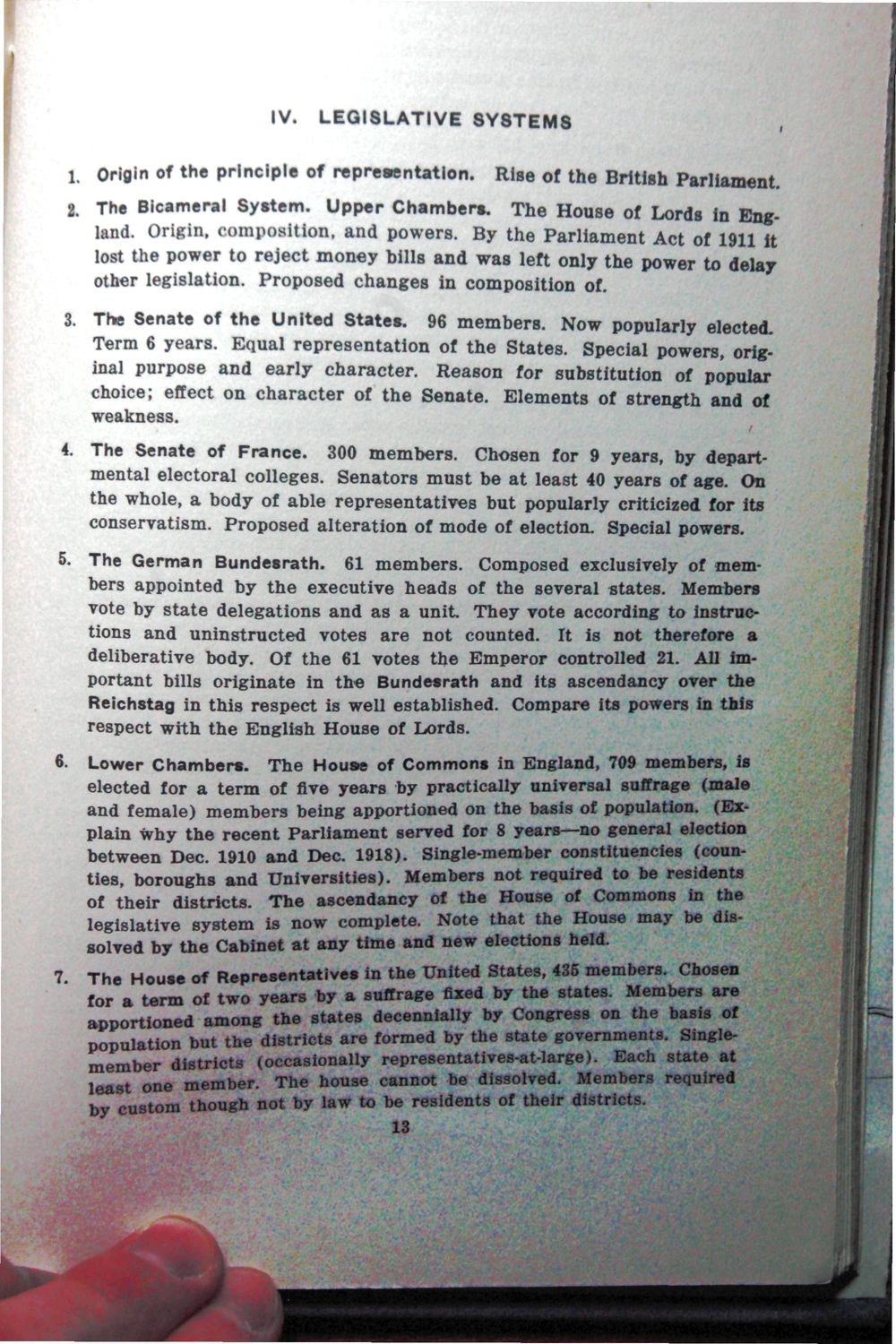Caption: War Publications - WWI Compilation 1923 - Article 48
This is a reduced-resolution page image for fast online browsing.

EXTRACTED TEXT FROM PAGE:
IV. LEGISLATIVE 8Y8TEM8 Parliament The House Oi i^ras m Eng nmg. 2. The Bicameral System. Upper Chambers. Lords in land. Origin, composition, and powers. By the Parliament Act of 1911 it lost the power to reject money bills and was left only the power other legislation. Proposed changes in composition of. 1. Origin of the principle of representation. Rise of the Bri 3. The Senate of the United States. 96 members. Now popularly elected. Term 6 years. Equal representation of the States. Special powers, original purpose and early character. Reason for substitut popular weakness. strength 4. The Senate of France. 300 members Chosen for 9 years, by departmental electoral colleges. Senators must be at least 40 years of age. On the whole, a body of able representatives but popularly criticized for its conservatism. Proposed alteration of mode of election. Special powers. 5. The German Bundesrath. 61 members. Composed exclusively of members appointed by the executive heads of the several states. Members vote by state delegations and as a unit They vote according to instructions and uninstructed votes are not counted. It is not therefore a deliberative body. Of the 61 votes the Emperor controlled 21. All important bills originate in the Bundesrath and its ascendancy over the Reichstag in this respect is well established. Compare its powers in this respect with the English House of Lords. 6. Lower Chambers. The House of Commons in England, 709 membe elected for a term of five years by practically universal suffrage I and female) members being apportioned on the basis of population. (Explain why the recent Parliament served for 8 years—no general election between Dec. 1910 and Dec 1918). Single-member constituencies (counties, boroughs and Universities). Members not required to be residents of their districts. The ascendancy of the House of Commons in the legislative system is now complete. Note that the House may be dissolved by the Cabinet at any time and new elections held. 7. The House of Representatives in the United States, 435 members. Chosen for a term of two years by a suffrage fixed by the states. Members are apportioned among the states decennially by Congress on the basis of population but the districts are formed by the state governments. Singlemember districts (occasionally representatives-at-large). Each state at least one member. The house cannot be dissolved. Members required by custom though not by law to be residents of their districts. 13 «a^ fc
|